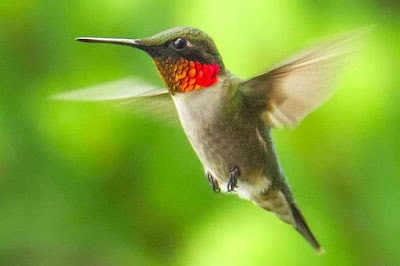Each spring, birds known as “neotropical migrants” make incredible long-distance journeys to breed and raise young. Spending winters in Central, South America and the Caribbean and as far as the tip of South America.
Bird watchers are on thelookout in the spring for these birds as they head north to breed and are passing through New Jersey.
Spring in North America means plenty of emerging insects and places to nest. Longer days and seasonal abundance of food, means long-distance migrants can raise larger clutches of young than their tropical relatives who stay put.
Many species follow coasts or natural features like rivers and mountain ranges. Most birds that migrate to or through New Jersey follow the Atlantic Flyway, an avian superhighway that includes all of North America’s Atlantic coastline. Birds also navigate by using the position of the sun and stars, sensing the earth’s magnetic field, and noticing landmarks during the day.
Red knots fly from the tip of South America to the Canadian arctic, and are known for making a critical stopover along the Delaware Bay in New Jersey to fatten up on horseshoe crab eggs, which give them the energy to complete their journey.
New Jersey has many great locations where birds can either pause along their migration routes or stay for the summer to nest and raise young. According to the New Jersey Department of Environmental Protection, we have 361 species of neotropical migrating birds, including warblers and shorebirds. Over 130 species nest in New Jersey, and nearly 80 of those are songbirds such as wood warblers, a group of 36 species that includes yellow, black-and-white, cerulean, northern parula, prairie, pine and Cape May warblers.
Another group of neotropical migrants are the brightly-colored tanagers and orioles, including the scarlet tanager and Baltimore oriole. And then there’s eastern North America’s smallest bird, the ruby-throated hummingbird, which winters in Central America and breeds throughout the eastern United States and southeastern Canada.
Among New Jersey’s many birding hotspots are Cape May Point State Park, the Sandy Hook unit of Gateway National Recreation Area, the Great Swamp National Wildlife Refuge, Sourland Mountain Preserve, Stokes State Forest, High Point State Park, and Liberty State Park.


No comments:
Post a Comment